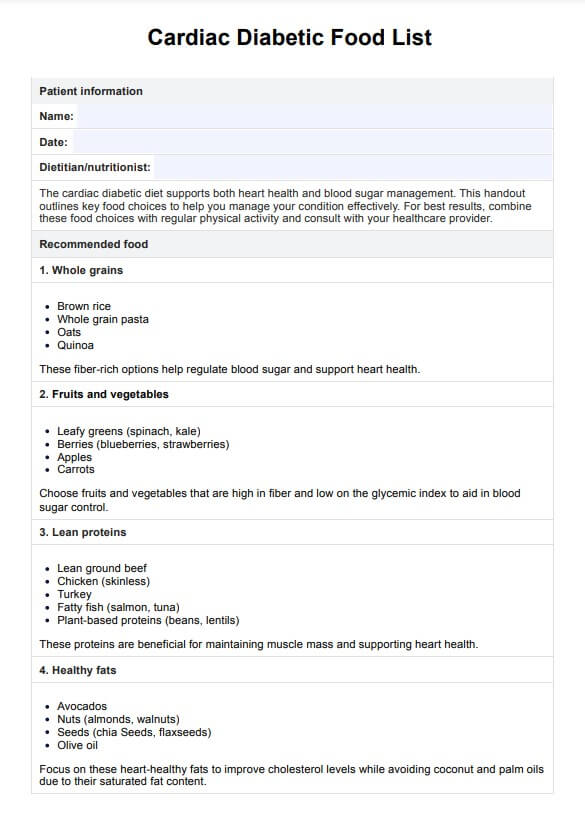Cardiac Diabetic Diet Food Lists are helpful because they provide a structured guide to eating for individuals managing both heart health and blood sugar levels. These lists simplify the prong foods that benefit both conditions, reducing the risk of complications. They help identify foods high in fiber, low in unhealthy fats, sodium, and sugars, and rich in nutrients essential for heart and diabetic health.

Cardiac Diabetic Diet Food
Discover our Cardiac Diabetic Food List, an essential resource for diabetes-friendly foods.
Cardiac Diabetic Diet Food Template
Commonly asked questions
Cardiac diabetic diets are primarily used by individuals who have been diagnosed with heart conditions, diabetes, or both. They are also helpful for those at risk of these conditions or anyone interested in adopting a healthier eating pattern. Healthcare providers might recommend these lists post-diagnosis of diabetes or heart disease or as a preventive measure to lower the risk of these conditions.
These food lists are used as a guide for daily meal planning and grocery shopping. Individuals can refer to the list to choose foods suitable for their dietary needs, ensuring a balance of nutrients necessary for managing heart and diabetic health. The lists typically categorize foods into groups (like whole grains, lean proteins, fruits, and vegetables) and suggest which foods to include and which to limit or avoid.
EHR and practice management software
Get started for free
*No credit card required
Free
$0/usd
Unlimited clients
Telehealth
1GB of storage
Client portal text
Automated billing and online payments











